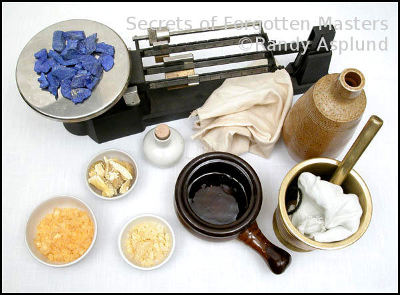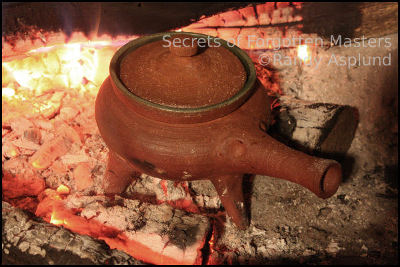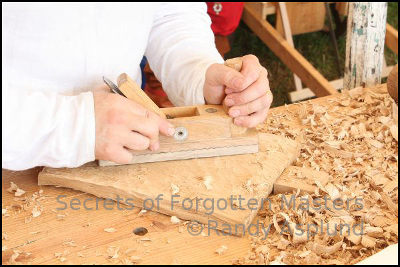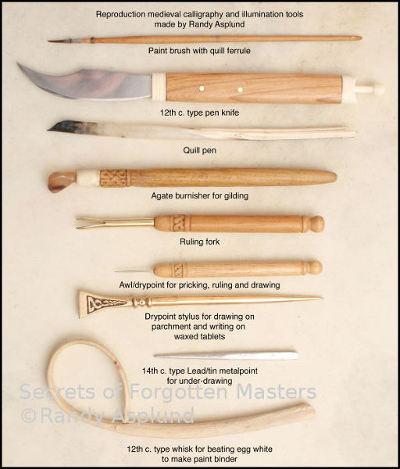
Secrets of Forgotten Masters:
A 21st Century Artist's Exploration of How The Medieval Manuscript Book Was Made
Secrets of Forgotten Masters is a work still in progress.
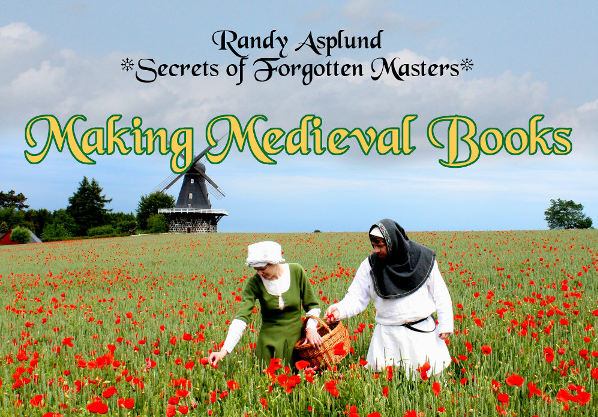
All images are © Randy Asplund
Before the age of printing, every bit of our knowledge and culture that we have not taken from the ground or learned by word of mouth was passed on to us in the form of the hand-made book. Today we are able to sit down at a computer and write as much as we wish for little expense. Without leaving the house we can buy a printed or digital book using that same computer. But what did it take to get a book in an age where it all had to be made by hand from raw materials? Most people today are unaware of the tremendous skills, material knowledge, resources and artistic ability required to make those books. Secrets of Forgotten Masters is your key to unlocking the materials and techniques used to make illuminated manuscript books in Northwestern Europe between 700 and 1500 AD. It is the product of many years of direct hands-on research and artistic challenges, of scientific study and examination of extant examples to confirm the real story. SoFM debunks the misunderstandings. It is backed by cited documentation, original research and experimentation, and supported by the skills and knowledge of an artist who makes complete authentic medieval books for a living.
Secrets of Forgotten Masters takes you on a visually rich and informative journey starting with manufacturing the waxed tablets used by authors to compose books all the way through to binding the finished manuscript as a complete book. Follow the author through making the ink and quills for writing, making the colors and illustrating, and see how it was all put together. Read translations of ancient recipes passed down from medieval authors and see how that information was confirmed by modern science and experimentation with those recipes, learning which work and which do not. SoFM is a book about making and using colors from raw materials, about wood working, about metal casting, about leather working, and even some needlecraft. It opens the door to understanding how different methods evolved for the processes used to create these master works of illuminated manuscript book art. And when you read about just how much work, expense, travel and education were needed in order to create a single book, your appreciation of the marvel of medieval technology will leave you awestruck.
Bookmark this page and check back as Secrets of Forgotten Masters comes together. The research is in late stages and the writing is in progress. In the meantime, please enjoy a few pictures of what this book is all about...
So many books have been written showing beautiful pages of medieval manuscript illumination, but few have more than the most basic mention of how great artists made these great works. Even books about how to create medieval calligraphy and illumination usually show a modern context, with modern tools and materials. Secrets of Forgotten Masters will take you back in time. You will see how it was really done using the right stuff. Whether you wish to learn to make this art yourself or you just have a casual interest for your own entertainment, you will be amazed to find what people could do so very long ago.
| Making
Ecclesiastes 8th c. Carolingian Binding Northumbrian Content |
Making
the Schiff Book 15th Century style French/Gothic |
